Vietnam islands are scattered like emeralds across the turquoise waters of Southeast Asia, beckoning travelers with their irresistible tropical charm and wild beauty. As Vietnam takes center stage as a top destination for those seeking pristine beaches and vibrant cultures, its diverse collection of islands stands out as a treasure trove waiting to be explored.
See more: Discover Exquisite Vietnam Destinations
Contents
Cham Island
Vietnam boasts a stunning coastline, and among its hidden gems lies Cham Island (Cu Lao Cham). This archipelago, nestled off the coast of Hoi An, is a dream destination for travelers seeking a tranquil escape and a chance to explore a vibrant underwater world.
Cham Island is a haven for beach lovers. Imagine yourself basking on powdery white sand, the gentle waves lapping at your toes as you gaze out at the crystal-clear turquoise waters. Island life here revolves around relaxation, and the atmosphere is undeniably laid-back.
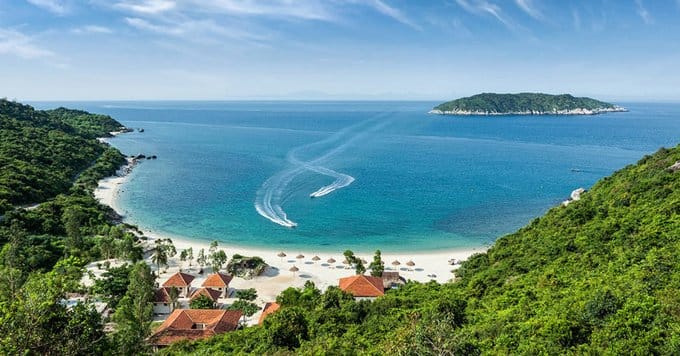
Beyond the beauty of its beaches, Cham Island truly comes alive underwater. The island boasts a network of vibrant coral reefs, teeming with a kaleidoscope of marine life. Snorkelers and scuba divers from all over the world flock here to explore this underwater paradise, encountering colorful fish, coral formations, and other marine wonders.
Cham Island’s charm extends beyond its natural beauty. The island has a rich cultural heritage, with a unique blend of Vietnamese and Cham influences. Immerse yourself in the relaxed atmosphere and explore the island’s villages, where you can witness traditional ways of life and experience the warm hospitality of the local people.
Unforgettable Experiences:
- While on the island, don’t miss the chance to visit the Cornflower Road. During the blooming season (July to August), witness a mesmerizing spectacle of red cornflowers blanketing the fields, creating a stunning contrast with the surrounding mountains and sea.
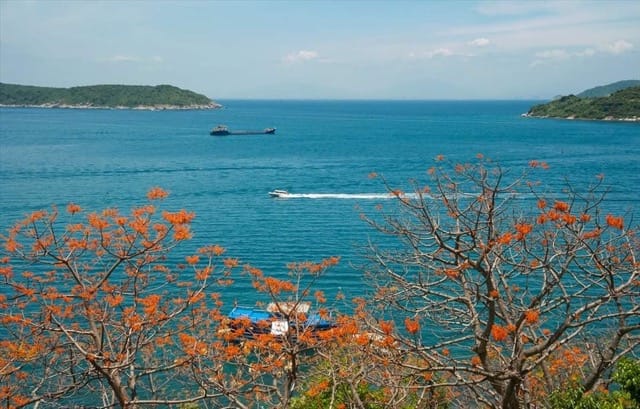
- Eo Gio, the “Windy Waist” of Cham Island, offers breathtaking panoramic views, making it a perfect spot for catching the sunrise or sunset. History buffs can explore the Hai Tang Pagoda, a centuries-old structure showcasing beautiful traditional Vietnamese architecture.
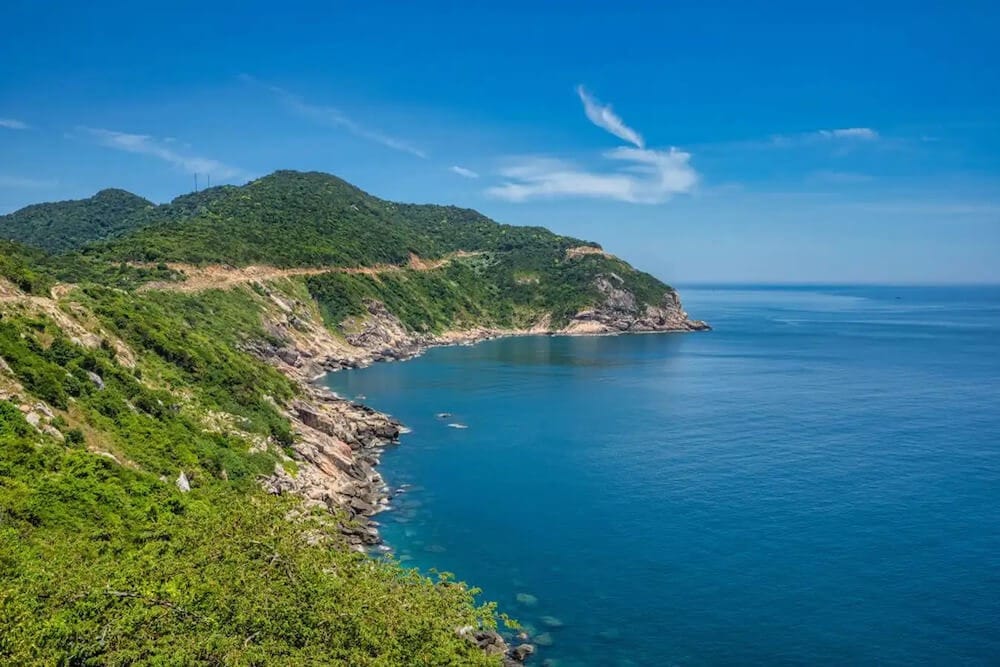
Eo Gio, Cham Island – Source: Collected
Con Dao
Con Dao, an archipelago nestled off the coast of Ba Ria-Vung Tau in southern Vietnam, boasts a fascinating and multifaceted identity. This collection of 16 islands, with Con Son Island being the largest, encompasses a mere 76 square kilometers. However, its beauty and historical significance far outweigh its size.
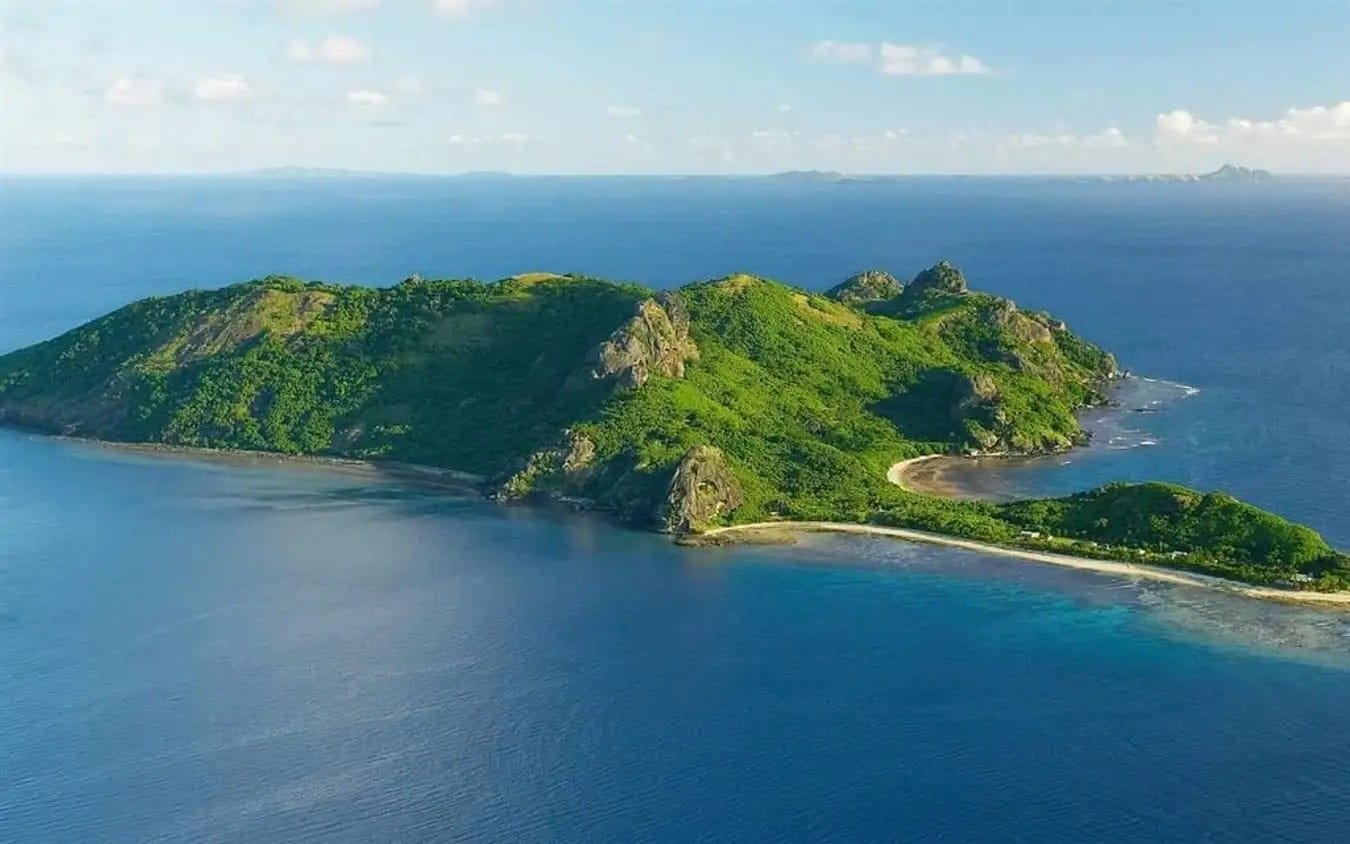
Con Dao’s past is marked by hardship. It was once dubbed a “hell on earth,” serving as a prison during the French colonial period and the Vietnam War. The archipelago holds the poignant remnants of that era, including the infamous Con Dao Prison. Here, visitors can bear witness to the harrowing artifacts and exhibits that depict the cruelty of war and the unwavering spirit of Vietnamese revolutionaries.
Despite its somber history, Con Dao has undergone a remarkable transformation. Today, it beckons travelers seeking a tranquil escape amidst breathtaking natural beauty. Pristine beaches with crystal-clear waters and colorful coral reefs offer a haven for divers and snorkelers. Lush primeval forests teeming with diverse flora and fauna invite exploration, providing a welcome respite from the urban clamor.
Exploring Con Dao’s Wonders:
- Hon Bay Canh and Hon Cau islands are paradises for eco-tourists. Here, you can embark on thrilling diving adventures to explore vibrant coral reefs, navigate fascinating mangrove forests, or witness the awe-inspiring spectacle of turtles laying eggs and the release of hatchlings back into the sea (during the nesting season).
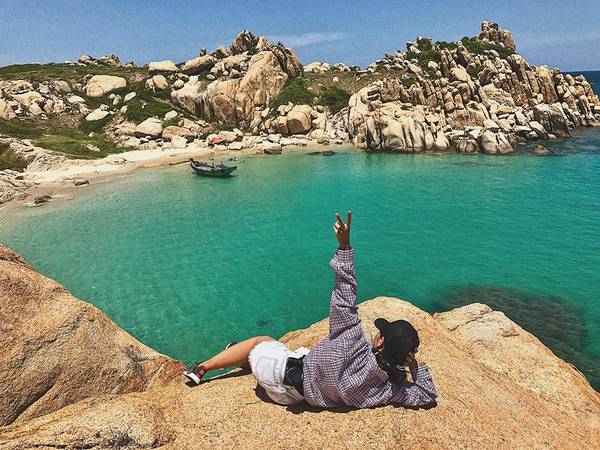
- For history buffs, the Con Dao Museum offers a comprehensive look into the archipelago’s intriguing past. Through over 1,000 artifacts and historical documents, the museum sheds light on Con Dao’s natural wonders, its human inhabitants, the struggles of the past, and its remarkable transformation into a thriving destination.
- Dam Trau Beach, situated close to Con Dao airport, offers a unique experience. This calm beach attracts visitors seeking relaxation with a touch of adrenaline. Imagine soaking up the sun while witnessing planes land just a short distance away!
Phu Quoc
Phu Quoc archipelago, a cluster of 22 islands nestled in the Gulf of Thailand, beckons travelers with its diverse landscapes and rich ecosystems. Located approximately 400 kilometers west of Ho Chi Minh City, Phu Quoc is Vietnam’s largest island, boasting a total area of 589.23 square kilometers. This tropical paradise caters to a wide range of tourist preferences, offering everything from pristine beaches and vibrant coral reefs to lush rainforests and historical sites.
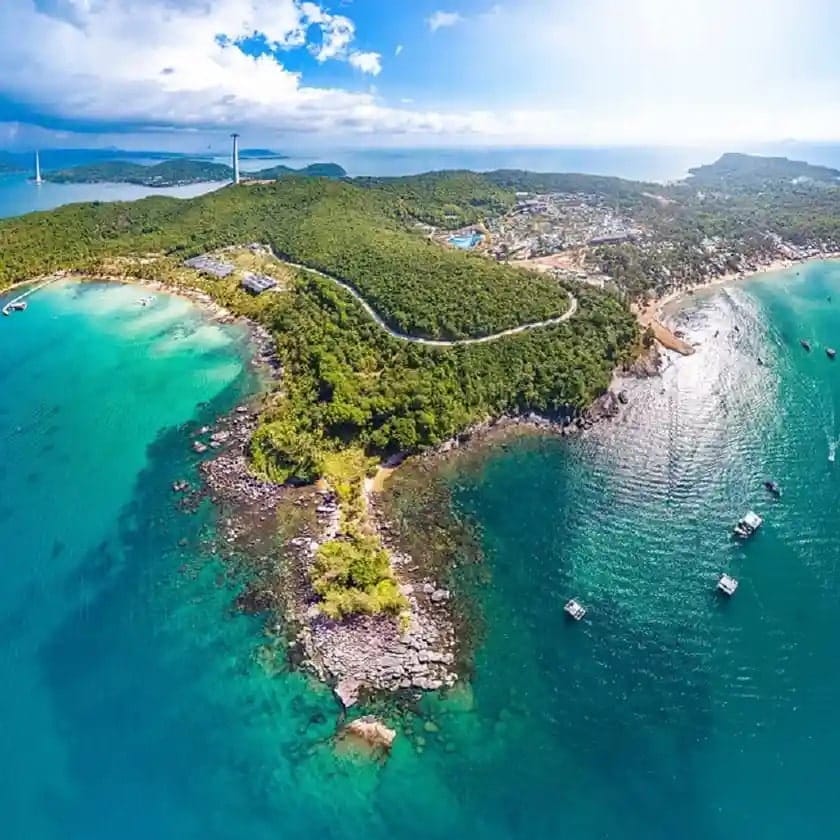
Exploring Nature’s Wonders:
- Phu Quoc National Park is a jewel in the island’s crown. Spanning over 31,400 hectares, the park is a haven for nature enthusiasts. Immerse yourself in the verdant beauty of the park’s diverse ecosystems, encompassing mountains, forests, streams, and waterfalls. Hike through the lush vegetation and discover hidden gems like Tranh Stream, Da Ban Stream, and Da Ngon Stream. For the adventurous, a 4-hour trek to the peak of Nui Chua Mountain (565 meters) rewards you with breathtaking panoramic views of the park.
- Vinpearl Safari, located in the island’s north, offers a unique opportunity to encounter over 3,000 birds, animals, and reptiles representing 175 species. Divided into two distinct zones, the safari allows visitors to experience the wonders of the animal kingdom. Explore the open zoo areas on foot or take a specialized vehicle through the semi-wild zone for an unforgettable close encounter with wildlife.
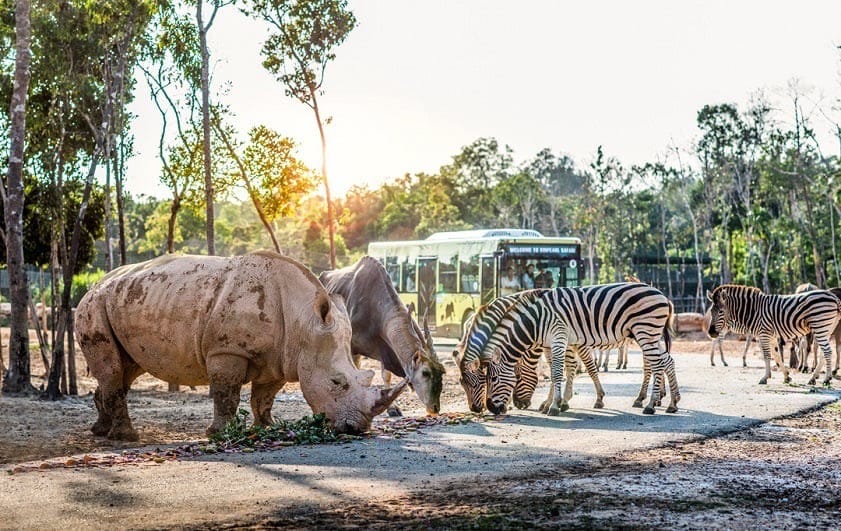
- Ganh Dau, jutting out into the sea in the island’s northwest, offers a glimpse of Phu Quoc’s untamed beauty. Due to its remote location, the cape attracts fewer visitors, making it ideal for those seeking a tranquil escape. Explore the dramatic coastline with its unique rock formations and discover secluded beaches with crystal-clear turquoise waters.
- Dinh Ba and Dinh Cau, situated in Duong Dong town, are Phu Quoc’s most revered religious landmarks. Steeped in local legends about Mr. Quy, Mr. Tai, the Jade Princess, and Thuy Long Thanh Mau, these temples serve as spiritual havens for fishermen who come to pray for safety, good weather, and bountiful catches. Every year on January 15th, these temples come alive with vibrant festivals, offering a glimpse into Phu Quoc’s rich cultural heritage.
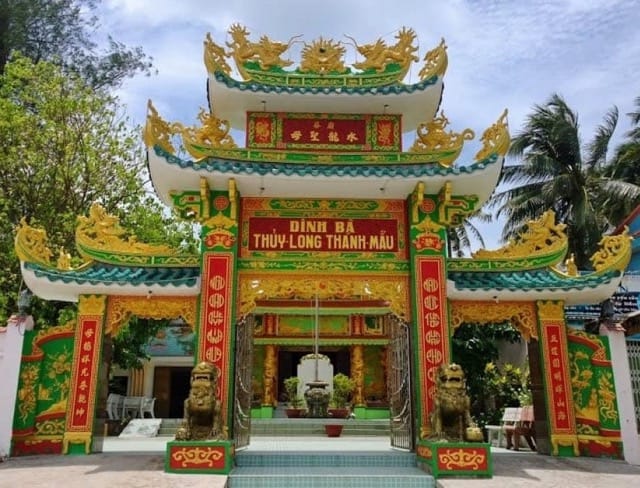
Cat Ba Island
Cat Ba Island, nestled amidst the awe-inspiring archipelago south of Ha Long Bay, beckons travelers seeking a captivating blend of natural beauty, adventure activities, and cultural charm. This largest island within the 367-island archipelago boasts dramatic limestone mountains, a calming turquoise sea, and a vibrant ecosystem waiting to be explored.
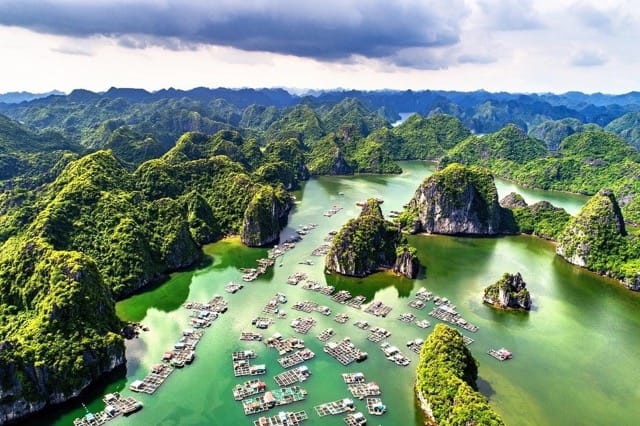
Finding the Perfect Time to Visit: Summer (April to October) paints Cat Ba with sunshine. Gentle waves and minimal rain make it ideal for swimming, sightseeing, and capturing picture-perfect moments. However, with this idyllic weather comes a surge in tourism, especially during peak season (May to July).
Unveiling Cat Ba’s Treasures:
- Lan Ha Bay, a member of the prestigious Most Beautiful Bays in the World Club, is a must-visit. Embark on a boat tour through its serene blue waters, marveling at the majestic limestone formations that rise from the sea. Explore hidden coves, kayak through secluded caves, and discover a world untouched by time.
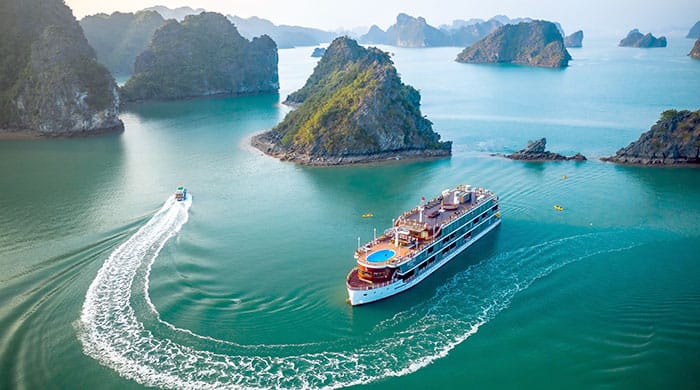
- Monkey Island, a short distance from Cat Ba, offers a unique encounter with playful primates. While interaction is encouraged, be sure to follow the island’s guidelines – avoid teasing the monkeys and refrain from offering them unfamiliar food.
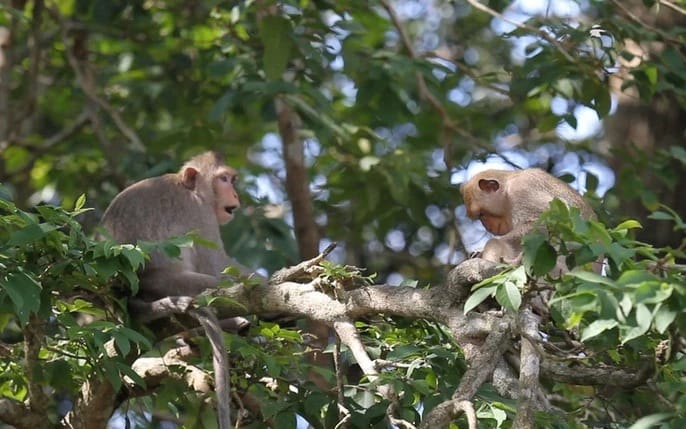
- Cat Ba National Park, a UNESCO World Biosphere Reserve, promises an unforgettable adventure. Hike through the verdant Kim Giao forest, conquer the challenging routes to Ngu Lam Peak for breathtaking panoramic views, or witness the nocturnal symphony of wildlife. Explore hidden caves, encounter diverse flora and fauna, and immerse yourself in the park’s rich biodiversity.
Beyond Exploration:
- Cat Ba offers a plethora of activities beyond sightseeing. Paddle through the crystal-clear waters on a kayak, venturing into hidden caves and coves. Experience the magic of spending the night on a luxury cruise ship, indulging in gourmet meals and witnessing breathtaking sunsets and sunrises on the open sea.
- For the thrill-seekers, scuba diving offers a glimpse into the vibrant underwater world. Witness a kaleidoscope of marine life, from colorful coral reefs to schools of exotic fish, and gain a newfound appreciation for the ocean’s wonders.
Hon Tre
Hon Tre (Hon Rua), a captivating island belonging to Kien Hai district in Kien Giang province, Vietnam, beckons travelers seeking a unique blend of natural beauty, cultural exploration, and historical charm. Situated amongst 140 islands that dot Kien Giang’s waters, Hon Tre boasts a total area of 428.59 hectares and is instantly recognizable for its distinctive turtle-like shape.
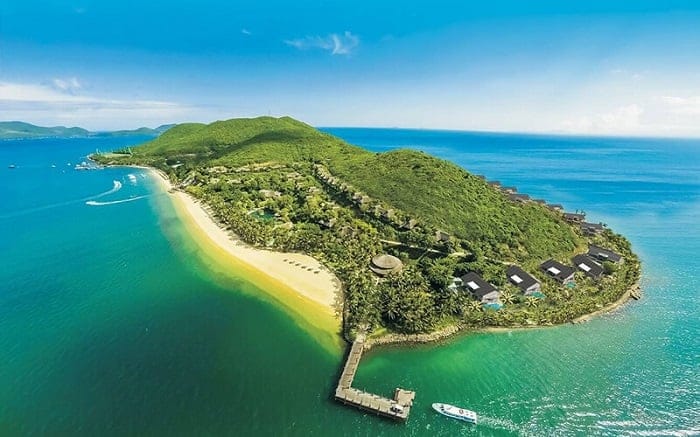
Hon Tre’s landscape is characterized by rolling hills and mountains, with elevations exceeding 30 meters. The island’s two main mountains, higher in the south and lower in the north, create this unique topography. The island’s coastline is a fascinating labyrinth of winding paths and hidden coves, with some flatter areas like Bai Chen, Dong Dua, and Bai Dua. These pristine beaches are popular spots for picnics and relaxation amidst the island’s tranquility.
Hon Tre enjoys a tropical monsoon climate, offering a distinct separation between seasons. The rainy season stretches from May to November, while the dry season, ideal for outdoor activities, graces the island from December to April.
A Journey Through Hon Tre’s Treasures:
- Ba Chua Xu Temple: Steeped in local tradition, the Ba Chua Xu Temple is a sacred site dedicated to a revered female figure believed to protect the lives and souls of the island’s fishing community. Each year, the islanders gather here to celebrate the Goddess and pray for bountiful catches and calm seas in the upcoming season. The temple’s strategic location on a high and airy plot of land, with the statue facing the sea, exemplifies the deep connection between the islanders and their livelihood.
- The Palace Worshipping the Nam Hai God: A more recent addition to Hon Tre’s cultural landscape is the palace dedicated to the God of the South China Sea, the Nam Hai God. This place of worship serves as a vital center for the island’s religious activities. Interestingly, the palace houses a fascinating artifact – a whale skeleton measuring a staggering 9.5 meters long and 3.5 meters wide. This unique display has earned the palace the nickname “The Whale Palace.”
- Ha Ba’s Tail: For nature enthusiasts, Ha Ba’s Tail is a must-visit. This dramatic rocky cape juts out from the island’s tip, creating a scene of untamed beauty. The unique rock formations, with cylindrical rocks stacked in various sizes, add to the wild charm of this location. Standing here, visitors can feel the vastness of the ocean and embrace the island’s peaceful atmosphere.
- Bia Stone: A short distance from Ha Ba’s Tail lies the intriguing Bia Stone. This multifaceted stone slab stands tall and seemingly unfazed amidst a shallow pool of water. The stone’s unique characteristic is its ability to appear different depending on the viewing angle. Local legends claim that during French colonial rule, attempts to remove the stone proved futile, earning it the name “Stele Stone.”
- Bai Chen: Seeking a spot for relaxation? Look no further than Bai Chen Beach, located on the island’s western shore. Easily accessible from the island’s Administrative Center, Bai Chen features a captivating coastline dotted with large, bowl-shaped rocks. These distinctive rock formations have inspired the beach’s name, which translates to “White Plate.”
Ly Son Island
Ly Son Island, nestled approximately 15 nautical miles off the coast of Quang Ngai province, Vietnam, beckons travelers seeking a unique blend of volcanic landscapes, pristine beaches, and rich cultural heritage. This island district, the only one in Quang Ngai, comprises two main islands: Dao Lon (also known as Cu Lao Re or Ly Son Island) and Dao Be (Cu Lao Bai). A smaller islet, Mu Cu, lies to the east of Dao Lon, adding to the archipelago’s charm.
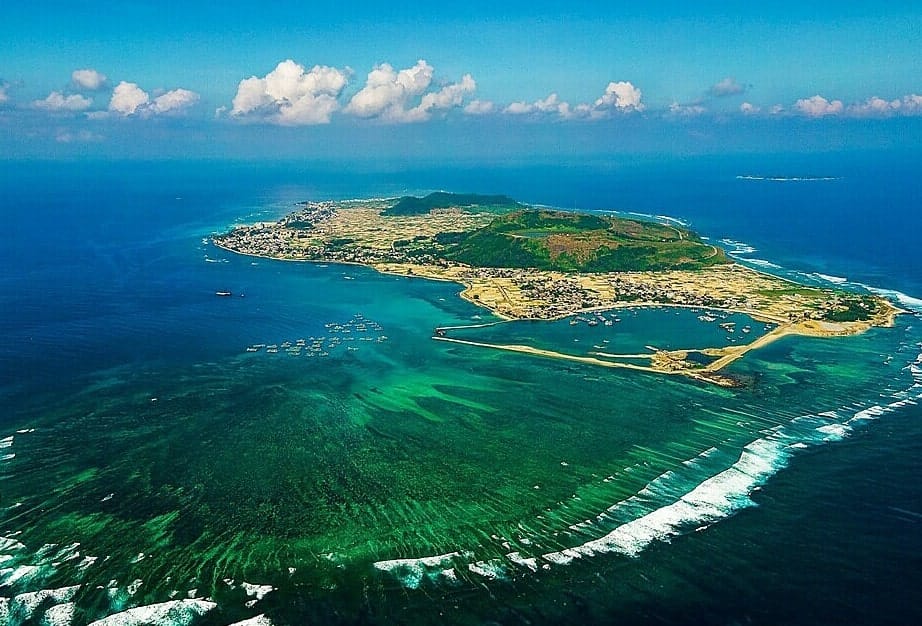
April to August is the ideal time to immerse yourself in Ly Son’s natural beauty. The weather during this period is typically stable, with sunny skies and minimal rainfall. However, be aware that this coincides with the peak tourist season (April to June).
September to December presents a different experience. The seas can be rough, and the weather becomes unpredictable, with occasional rain and storms. However, an interesting phenomenon occurs during this time. From late December to April, the coastal rocks become draped in vibrant green moss, creating a unique and captivating landscape.
Exploring Ly Son’s Wonders:
- The Big Island (Dao Lon): This is one of the five inactive volcanoes that dot the island district. Hike up Thoi Loi for breathtaking panoramic views. The peak, reaching approximately 170 meters above sea level, boasts a giant crater basin that serves as a vital freshwater source for the island. A towering 20-meter national flagpole marks the summit, a popular spot for photo opportunities.
- Hang Cau: Experience the contrasting beauty of Hang Cau. One side features dramatic vertical cliffs, while the other offers a pristine beach with soft, white sand. The relentless wind and waves have sculpted the cliffs into unique shapes, and the nearby shore boasts vibrant coral reefs waiting to be explored by snorkelers and divers. Kayaking is another popular activity here, allowing you to explore the coastline from a different perspective.
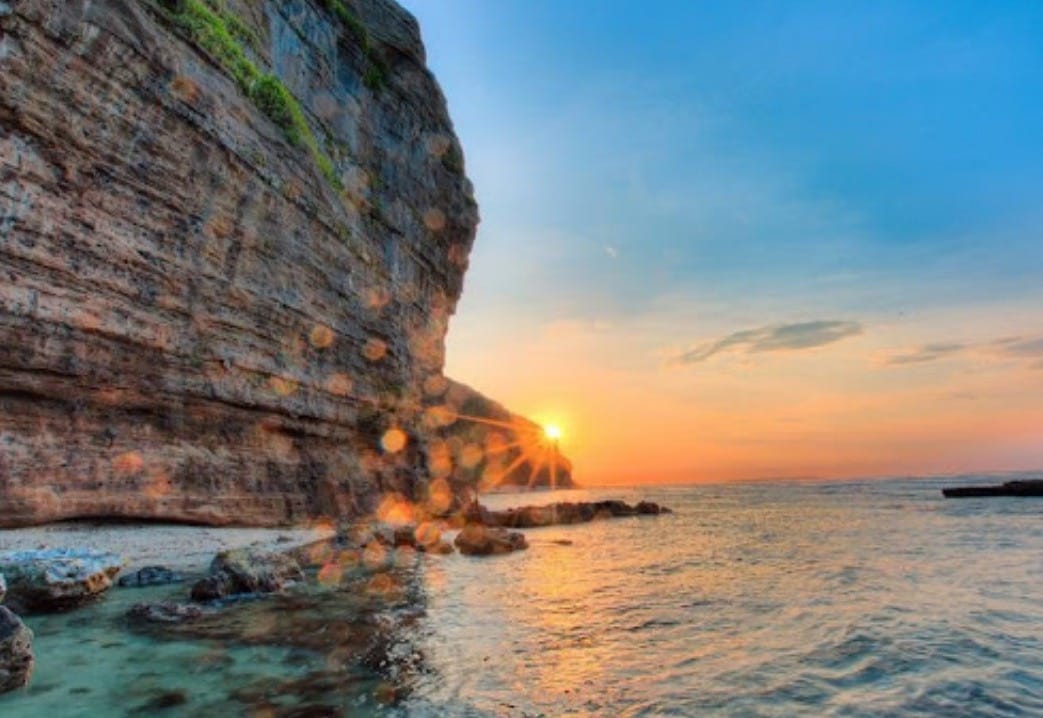
- Hang Pagoda: Steeped in history, the Hang Pagoda, nestled within a large cave halfway up a mountain near the To Vo Gate, is over 400 years old. This place of worship honors Buddha and those who reclaimed the island. The expansive pagoda courtyard, surrounded by ancient trees, houses a captivating statue of the Guanyin Buddha overlooking the sea. Inside the pagoda, marvel at the altars carved from natural stalactites and discover remnants of the Champa civilization. The winding mountain road leading to the pagoda offers scenic vistas of the garlic fields and peaceful villages below.
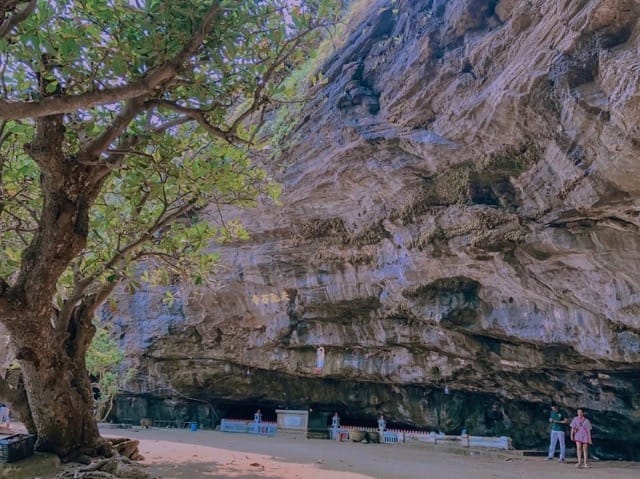
Hang Pagoda, Ly Son – Source: Collected
Conclusion
In conclusion, Vietnam’s top islands captivate with their unparalleled beauty and diversity. From the sun-kissed beaches of Phu Quoc to the lush landscapes of Con Dao, each island offers a unique blend of natural wonders and cultural heritage. Embrace the opportunity to immerse yourself in the warm hospitality of the Vietnamese people as you explore these enchanting destinations. Start planning your next tropical getaway today and embark on a journey to discover the hidden treasures of Vietnam’s island paradise.
Frequently Asked Questions
How many islands does Vietnam have?
Our country’s waters have nearly 4,000 large and small islands, of which: the Northeast sea has over 3,000 islands; North Central region on 40 islands; The rest are in the South Central Sea, the Southwest Sea and the two archipelagos of Hoang Sa and Truong Sa.
Which island to visit in Vietnam?
The best island for you depends on your interests! Here are a few popular choices:
- Phu Quoc: Known as Vietnam’s “Pearl Island,” Phu Quoc offers pristine beaches, vibrant coral reefs, and a developing tourist infrastructure. Ideal for beach lovers, nature enthusiasts, and those seeking nightlife.
- Cat Ba Island: Situated near Ha Long Bay, Cat Ba offers dramatic limestone formations, hidden coves, and a national park perfect for hiking and wildlife encounters. A great option for adventurers and nature lovers.
- Ly Son Island: This volcanic island district boasts unique landscapes, black sand beaches, and a rich cultural heritage. Perfect for those seeking a unique escape and a blend of natural beauty and history.
- Con Dao Islands: This archipelago offers a tranquil retreat with untouched beaches and historical sites. Ideal for relaxation and exploring remnants of French colonial times.
How to get to Phu Quoc?
Phu Quoc Island is easily accessible by air and sea. Numerous domestic airlines offer direct flights from major Vietnamese cities like Hanoi and Ho Chi Minh City. Alternatively, you can take a ferry from the mainland towns of Rach Gia, Ha Tien, or Can Tho.
Is it worth it to go to Phu Quoc?
Absolutely! Phu Quoc caters to a wide range of travelers. If you’re seeking beautiful beaches, delicious seafood, exciting water activities, and a taste of Vietnamese culture, Phu Quoc is definitely worth considering. However, keep in mind that it can get crowded during peak season (May to July).


Related Posts
Review Vinh Trang Pagoda: A My Tho Architectural Gem
Nestled in the heart of My Tho City, Vinh Trang Pagoda stands as one of the most magnificent and historically significant religious sites in the Mekong Delta region. This architectural masterpiece, with its unique fusion of Eastern and Western design elements, has captivated visitors for years. As one of the premier My Tho attractions, the […]
10 Best Things To Do In My Tho – Mekong Delta
My Tho, the charming capital of Tien Giang Province, serves as the perfect gateway to the enchanting Mekong Delta region. Located just 70 kilometers southwest of Ho Chi Minh City, this riverside city offers visitors an authentic taste of Vietnamese rural life, where ancient traditions blend seamlessly with modern tourism. When exploring things to do […]
Ho Chi Minh To Mekong Delta: Best Transport Options Guide
The journey from Ho Chi Minh to Mekong Delta offers travelers an exciting transition from Vietnam’s bustling commercial capital to the tranquil waterways and lush landscapes of the country’s agricultural heartland. This comprehensive guide explores all transportation options available for reaching the Mekong Delta, helping you choose the best method based on your budget, time […]